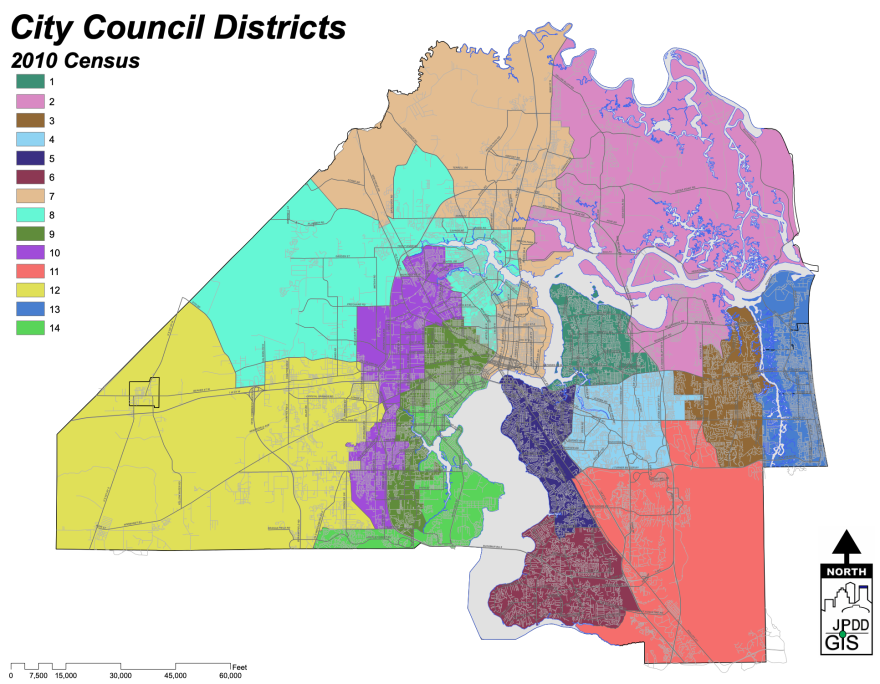Jacksonville officials won’t be rushing the redistricting process after receiving Census Bureau data four months later than usual. In a meeting Tuesday, the City Council’s redistricting committee approved a timeline for Jacksonville to have new voting districts by mid-April, after the next School Board election in March.
During the redistricting process, the city’s nearly one million residents will be redivided into 14 City Council districts of roughly 71,000 residents each. The new district boundaries could impact Jacksonville’s political power infrastructure for the next decade.
“We are trying to not be engaged in the politics of what we’re doing, but there’s a big backdrop of politics to what we’re doing,” redistricting committee member Brenda Priestly Jackson said.
The City Council has the final say on approving the redistricting map, and currently has a GOP supermajority. Six of the 19 district and at-large council members are Democrats. The new voting districts could - in theory - keep the City Council within Republican control, despite an increasingly blue Duval County. In the 2020 general election, 42% of Duval County voters were registered Democrats and 39% were registered Republicans.

The Republican-led southeastern region of Jacksonville saw the largest population growth over the past decade, with more than 90,000 residents represented by City Councilman Danny Becton (also the vice chair of the redistricting committee). About 20,000 of his constituents are expected to be drawn into new districts, according to the planning department.
The seven-person committee composed of City Council and School Board members voted Tuesday to use total population instead of voting-age population to draw the new districts, on par with what the city’s done in previous redistricting cycles. Property appraiser Jerry Holland told the committee counting total population gives large families more representation.
“In lower income areas ... there was a higher population of families with children,” Holland said. “It was to their benefit to go total age.”
Another point of debate during Tuesday’s meeting was what redistricting will mean for the March School Board election. Under the delayed redistricting timeline, a School Board member could be elected in March and be drawn out of their district the following month. Committee members voted Tuesday to favor new boundaries that keep sitting City Council and School Board members in their districts.
Under city ordinance, the goal of redistricting is to ensure “the people of the City, and their varied economic, social and ethnic interests and objectives, are adequately represented in the Council.” But how that directive plays out could depend in part on who turns up to the upcoming public meetings, according to Bill Killingsworth. He’s charged with drawing the first draft of a new map for the committee before it heads to City Council for approval.
“When it comes down to individual districts, the council member may say this community should not be separated from this one and it may come down to reasons that are not obvious to the planning department,” Killingsworth said.
For now, he said one top priority is not to cross the river in any one district. Under the proposed timeline, Killingsworth will present a preliminary map at the committee’s next meeting on September 9. The redistricting committee is set to present an agreed-upon plan to the City Council by early January.
Contact Claire Heddles at cheddles@wjct.org, or on Twitter at @claireheddles.


